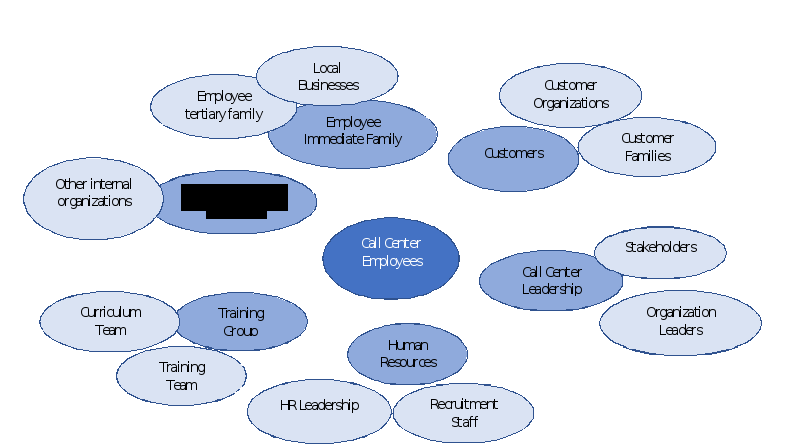I attached an example of the assignment, the stakeholder analysis, and the stakeholder brainstorming document. The attachments that say benchmark data collection and Affinity Diagram and Root Cause An

Understanding Stakeholders
What is a stakeholder? According to Cambridge Dictionary “A stakeholder can be an employee, customer, or citizen who is involved with an organization, society, etc. and therefore has responsibilities towards it and an interest in its success.”
While this definition appears generally broad, the stakeholders involved with an implementation can be numerous. This section reviews different types of stakeholders, introduces tools for both stakeholder identification and analysis towards both priorities and stakeholder support.
There are two different types of stakeholders, internal and external. Internal stakeholders are those involved day to day in the program. These are individuals associated with the actual project or specific problem. External stakeholders are those outside of the organization who are influenced or impacted by the project or issue. There may also be external stakeholders that may be part of the project depending on the issue.
There are many different stakeholders and it is important to understand the interest and influence of each. The first step is to brainstorm and identify all the potential stakeholders. Figure 1 is an example of a stakeholder diagram depicting the target audience call center quality issue. The second ring of circles represents the individuals or organizations that have a direct connection with the interests of the primary stakeholder impacted by the initiative. The other rings around the secondary group are tertiary stakeholders who have a direct connection with the interest of the secondary stakeholders in support of the primary stakeholders.
The key purpose of this brainstorming tool is to ensure that you have not missed a stakeholder group. First you must revisit the problem statement to ensure that you have the focus of the issue. Below the example problem statement is an example of brainstorming for internal and external stakeholders.
Problem: Many call center representatives are not achieving quality standards, thereby contributing to the overall low-quality rating (92%) for the call center. Through data and process evaluation, it was determined that the training time for call center representatives is 30% less than other similar call centers, which may contribute to lack of skills training. In addition, the online tools available to the call center representatives are not updated frequently with procedural changes and do not contain all required information necessary for representatives to perform their job. The low quality over the past 6 months has resulted in a 2% decrease in customers and a $550,000 loss in annual revenue. Decreased employee satisfaction in the call center due to the issue has contributed to a 5% increase in voluntary attrition, which costs the business $80,000 annually. There is an opportunity to improve quality and reduce both customer and employee attrition by addressing the skills training and resource issue in the call center.
Figure 1

Once the stakeholder individuals or organizations are identified, they require analysis for interest and support. The other critical aspects of this analysis are to understand what the stakeholder is contributing and identification of an action plan. Reference the "Stakeholder Analysis Template" in the course materials for an example.
© 2019. Grand Canyon University. All Rights Reserved.



